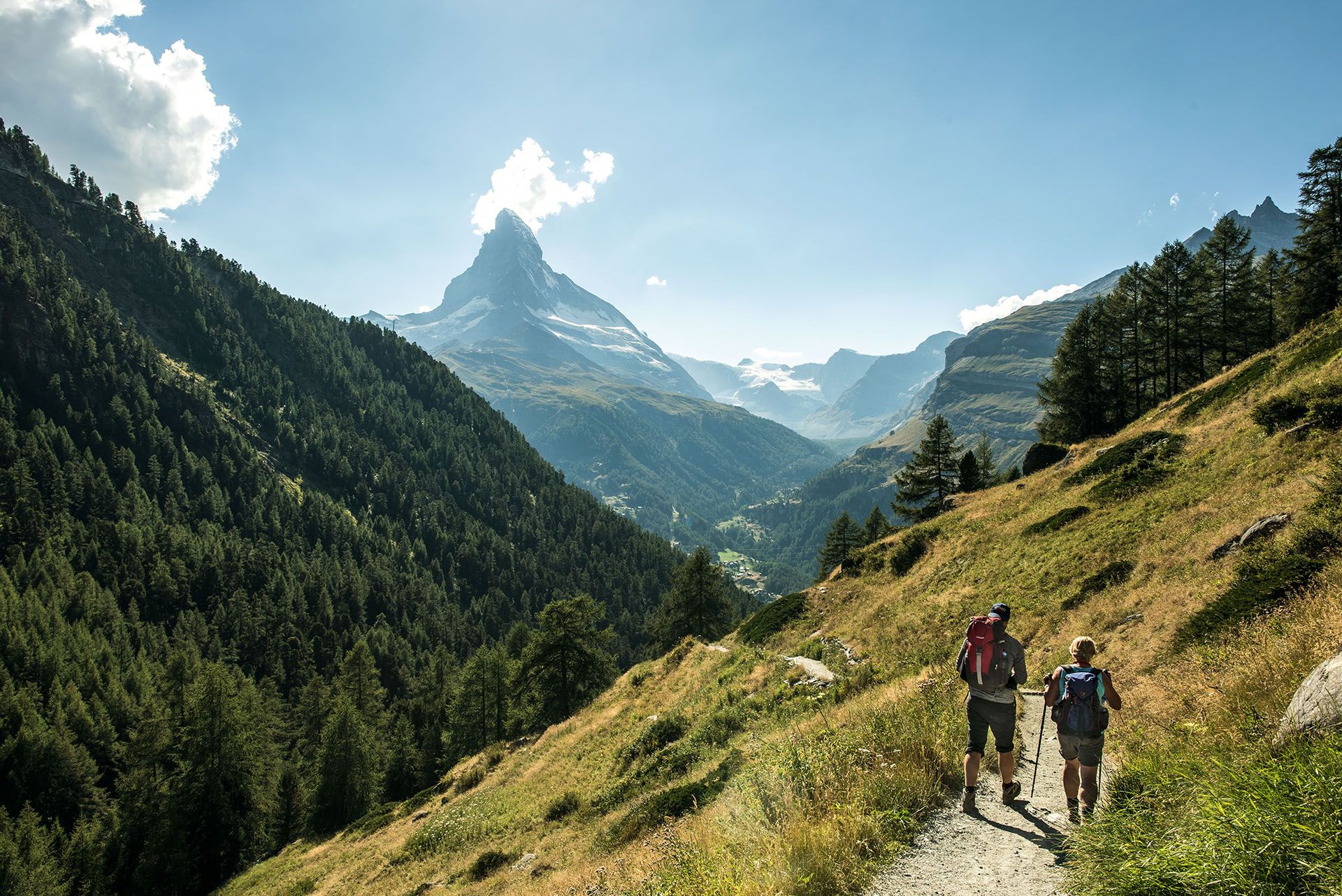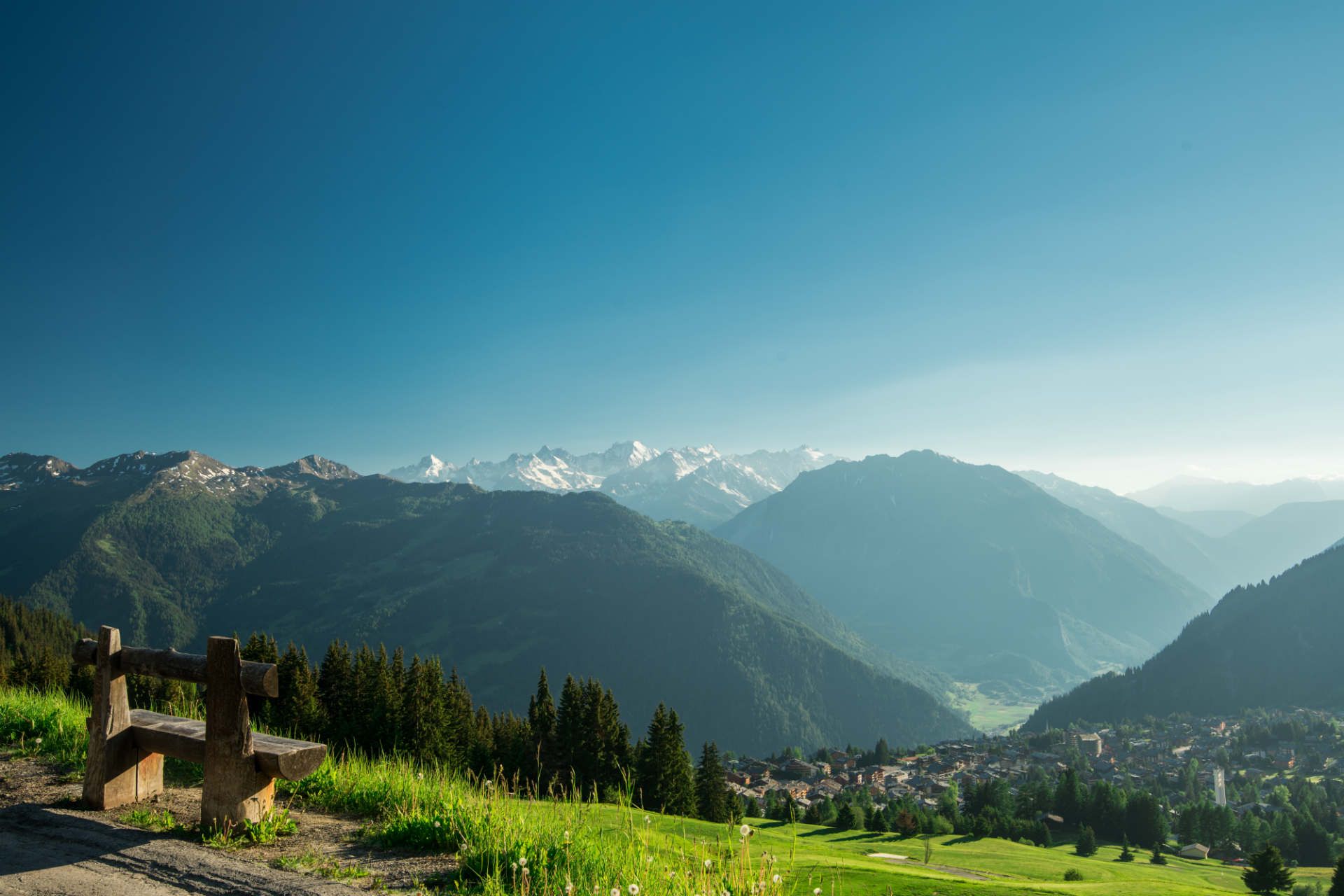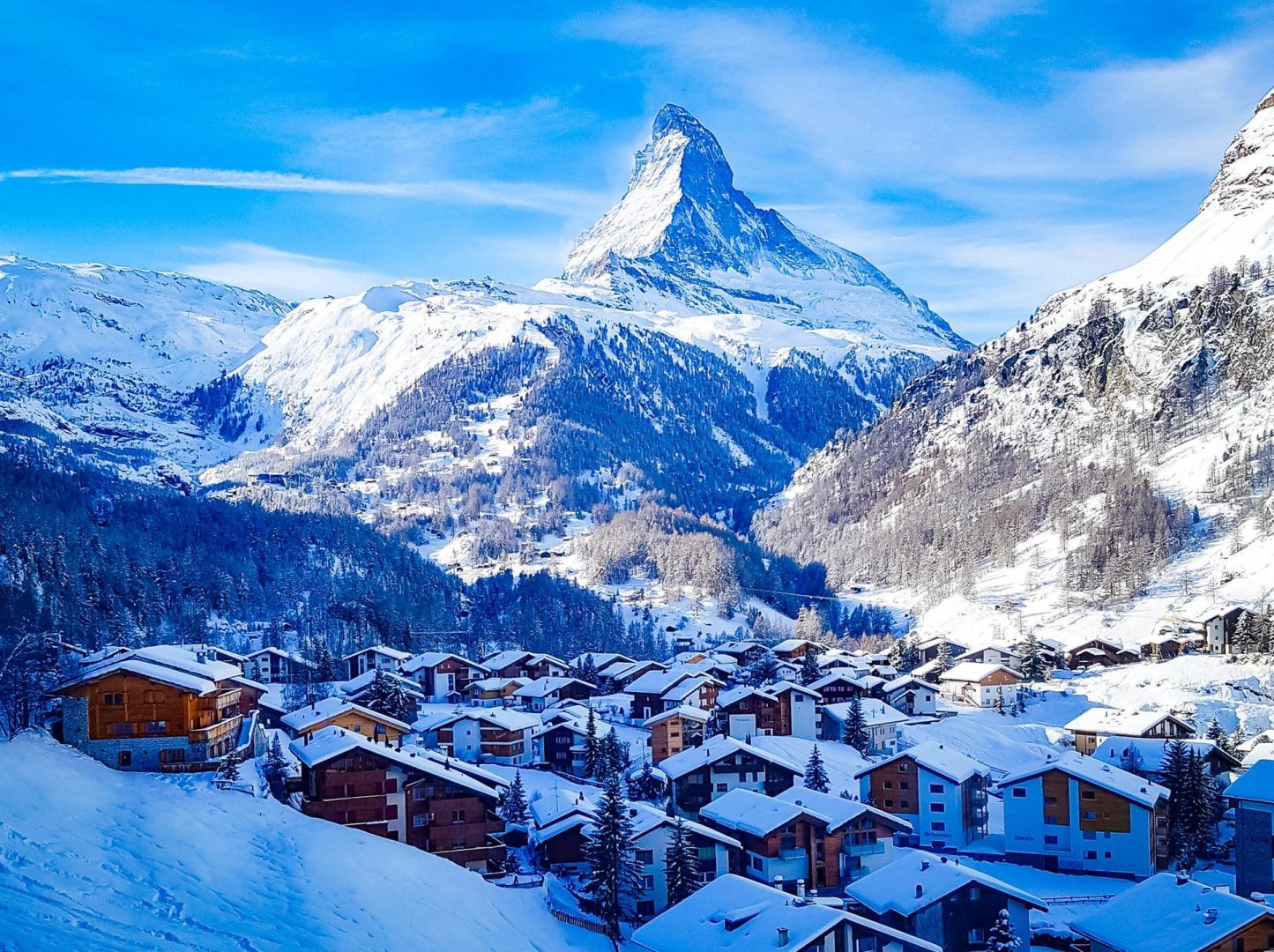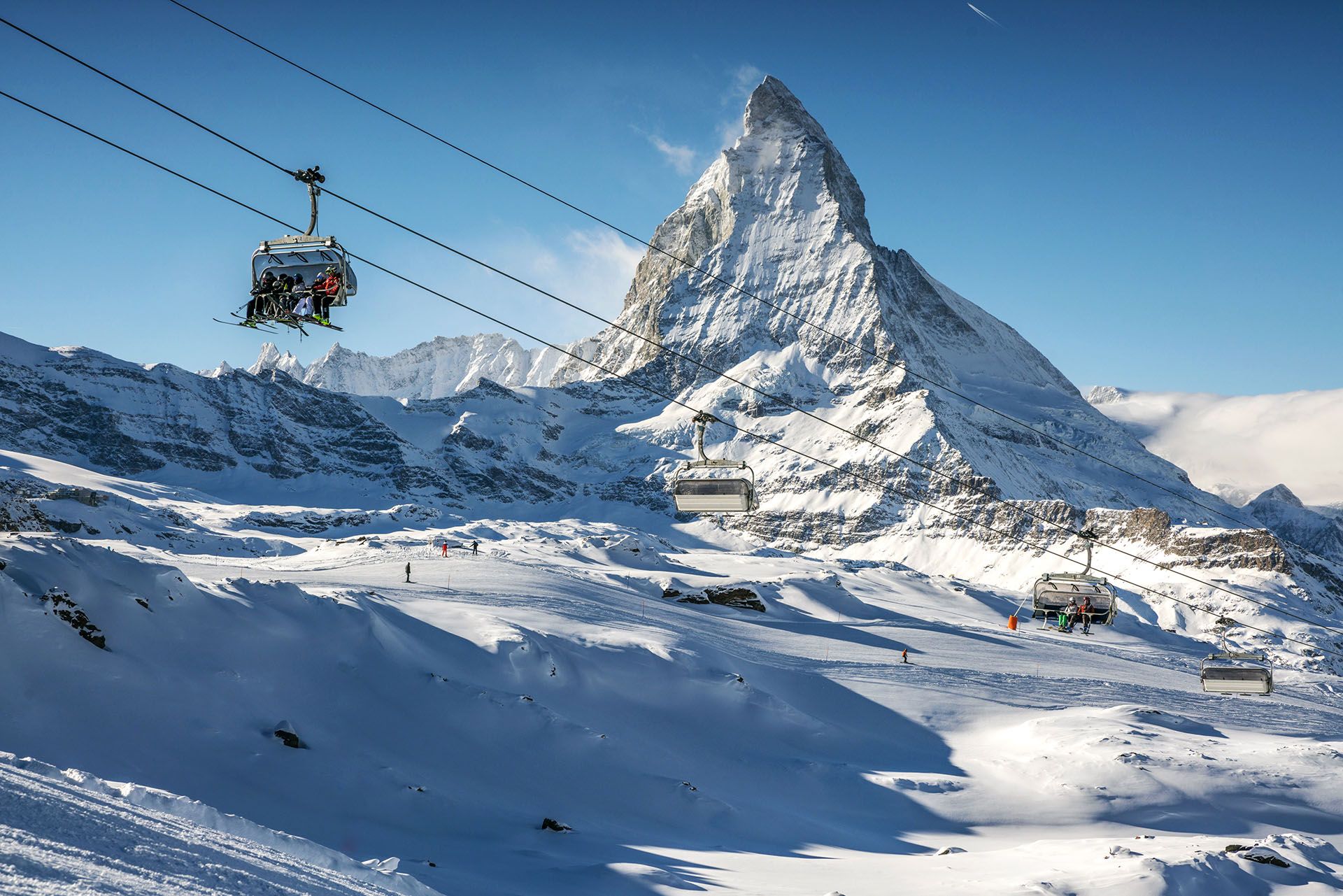Planning your own trip? Prepare for your trip
Use Rough Guides' trusted partners for great rates
- Walking Hiking Trekking
- Europe
- Geneva
- Zurich
- Zermatt and the Matterhorn
- Valais
- Inspiration
- See & Do
- Travel Advice
- Where to stay
- Travel Tips
- Switzerland
Book your individual trip, stress-free with local travel experts
The Valais (Wallis in German; Vallese in Italian) is Switzerland’s third-largest canton. It's a diverse swathe of country occupying the valley of the River Rhône, from its source in the Rhône glacier to its inflow to Lake Geneva. Plan your trip to the fabulous Swiss canton Valais with our guide to Valais, based on The Rough Guide to Switzerland, your essential travel guide for Switzerland.
Twenty percent of the canton is covered by ice, and yet the region has the driest climate in Switzerland, with the lowest rainfall and the most sunshine in the whole country.
Meanwhile, in the high mountains the annual snowmelt is stored behind half a dozen of the tallest and highest-altitude dams in the world.
For the Swiss, the Valais represents a piece of common heritage that's all but lost elsewhere in the country. In the most unlikely corners of Geneva and Zürich, you can find restaurants done up as traditional Valaisian-style dark wood chalets.
The dryness and sunshine of the valley are ideal vine-growing conditions. The canton’s 22,000 vineyard owners are famous for producing some of the finest wine in the country.
Outside the famous resorts of Zermatt, Verbier and Crans-Montana, the Valais is still a wild and little-known place. The only town of any size is the cantonal capital Sion, with a low-key, easy-going atmosphere and a handful of sights.
Few outsiders penetrate the rural side-valleys either side of the road and rail line that run along the valley floor. This means those who make the effort find plenty of unspoiled scenery, and adventure sports of all kinds.
Rough Guides tip: To increase your chances of a great holiday, read how many days you need to spend in Switzerland.

Valley la Fouly, Valais, Switzerland – a highlight of your Valais travel guide © Shutterstock
Before mainline trains enter Valais, they pass through a diverse area known as Haut-Léman. This extends southeast of Lake Geneva. with the cantonal boundary marked by the meandering Rhône.
The valley floor and west-facing foothills make up the acclaimed wine region of Chablais, centred on the fine old town of Aigle, with its turreted castle surrounded by vineyards.
The 3000m-plus peaks of the Alpes Vaudoises rise above the town, which has a handful of attractive, small-scale resorts that offer excellent skiing and a cosy atmosphere away from the bustle of Verbier and Crans-Montana.
The huge peaks east of Aigle and the Rhône valley are collectively dubbed the Alpes Vaudoises, sheltering a few attractive, isolated family-oriented ski villages that offer some of the best facilities outside the huge Valaisian resorts further south.
Friendly Villars leads the bunch, connected by a system of lifts both with its neighbour, Gryon, and with the separate resort of Les Diablerets. The latter is linked to Gstaad’s lift pass, and subtitled “Glacier 3000” for its access to year-round glacier skiing and boarding above 3000m.
Tiny Leysin, tucked away in a valley above Aigle, completes the picture. In summer, all these villages slumber quietly in the sunshine, hosting walkers and those seeking undisturbed Alpine isolation.

Southern Rhone Valley with views to Aigle and the peaks of Mouveran and Dent de Morcles © schame/Shutterstock
Explore more places to stay in Leysin and Les Diablerets.
Tacked seamlessly south of Haut-Léman, Valais Romand, the French-speaking part of Valais, comprises the westernmost portions of the canton.
Occupying the broad Rhône valley floor and the most accessible foothills just above, it’s more populated and livelier than the wilder German-speaking east. Mountain passes aside, the road and train line from Montreux are the sole routes in and out.
The mountains flanking the Rhône are cut through with a handful of dead-end valleys, ideal for long-distance hiking. Note that only the high pass roads over the Grand-Saint-Bernard to Aosta (Italy) and the Col de la Forclaz to Chamonix (France) give access from outside.
These two roads join the valley at Martigny, a rather unprepossessing place that's somewhat overshadowed by the cantonal capital Sion and its neighbour Sierre.
The resort towns of Verbier near Martigny, and Crans-Montana above Sierre, are two of the best-known ski resorts in the world, offering the combination of groomed pistes and chic après-ski that Switzerland is famous for.
Explore more places to stay in Champex, Verbier, Sion and Crans-Montana.

Cnans montana ski resort © Alec Issigonis/Shutterstock
East of Sierre stretches the German-speaking portion of Valais – or Wallis, as it officially becomes. To mark it out from the Lower Valais to the west, this is known as Upper Valais, or Oberwallis.
Brig, the main town of the region, is an important road and rail junction, but it's otherwise of limited interest. The concealed Lötschen valley is a more worthwhile detour.
The reason everybody passes through the area is to make a pilgrimage to the little mountain village of Zermatt in order to lay eyes upon the Matterhorn, the most famous of all Switzerland’s mountains.
In a side valley nearby sits the equally alluring resort of Saas-Fee. East of Brig, the remote Goms region follows the Rhône to its glacial source.
To discover the best places to stay in Zermatt, read our Zermatt and the Matterhorn travel guide. Otherwise, read on for top accommodation in the rest of the Oberwallis region.

Head to a hotel in Zermatt for easy access to top Valais travel experiences, including hiking © Swiss Tourism
Explore more places to stay in the Swiss canton of Valais.
The main reason for coming to Martigny is to visit the galleries of the Fondation Pierre Gianadda, signposted about 700m south of Place Centrale.
Established in 1978 by a local philanthropist, Léonard Gianadda, and named after his brother, the complex takes in several exhibition spaces within a single museum, the principal focus being the changing series of top-flight art exhibitions staged in the main gallery area.
It’s the scenic skiing and walking that put Verbier on the map — few places in the world offer such a breadth of possibilities with such awe-inspiring scenery as a backdrop.
Following the 1960s ski boom, Verbier is characterized by apartment blocks and modern housing, with the traditional wooden buildings of Vieux Verbier spreading below.
European high society flocks to the resort in season, when the mood of the place can get brash, and the après-ski hangouts along the Rue de Médran become packed.

Verdant Verbier in Valais, Switzerland © Shutterstock
Sion (pronounced see-ohh), known as Sitten in German, is the capital of Valais — an atmospheric valley-floor town, with a fine old quarter and two ancient castles.
With archeological evidence suggesting the site was inhabited during Neolithic times, Sion enjoys a glorious climate. Dry, mild and consistently clear, afternoons are bathed in bright sunshine. Its wines are outstanding, and trying them is sure to be a memorable Valais travel experience.
This lovely little wine town on the Rhône is sunny and unpretentious, with vineyard walks leading along the valley.
Hardly any foreigners come to Sierre unless they’re catching the funicular up to the ski resort of Crans-Montana on the hillside above. Which is all to the good, because it leaves this idyllic valley-floor town quiet — perfect for a day or two strolling and wine tasting in the surrounding vineyards.
Crans-Montana is another of Switzerland’s big, world-famous ski resorts, occupying what's claimed to be the sunniest plateau in the Alps. It faces south over the Rhône valley with a spectacular panorama of peaks yawning beyond.
Along with Verbier and St Moritz, it’s also one of the glitziest resorts, with what the tourist office likes to call the finest shopping in the Alps.
St Moritz may have the glamour, Verbier may have the cool, Wengen may have the pistes, but Zermatt beats them all, for Zermatt has the Matterhorn.
No other natural or human structure in the whole country is so immediately recognizable. Indeed, in most people’s minds the Matterhorn stands for Switzerland like the Eiffel Tower stands for France. Find out more in our Zermatt and the Matterhorn travel guide.
To experience the full majesty of the Matterhorn, book a full-day guided Matterhorn hike.

The majestic Matterhorn mountain is a feature of any travel guide to Valais © Shutterstock
Lying in the next-door valley to Zermatt, Saas-Fee (1800m) is sometimes overlooked, perhaps because it doesn’t have any train access.
However, were it not for the Matterhorn, the array of peaks around Saas-Fee would take centre-stage on any Alpine itinerary. It's a beautiful village set in an amphitheatre of glaciers, ideal for sunny summer walks and gentle skiing and boarding.
A highlight here is the giant Feegletscher (“Fairy Glacier”), trickling its meltwater down through the village, and active enough in its various sectors to limit what would otherwise be spectacular skiing.
Rarely visited, remote, tranquil and sublime, the upper part of the Rhône valley is known as the Goms. Stretching from Brig to the high Alpine passes, winter sees thick snow covering the whole region, making it perfect for cross-country skiing at all levels.
The Goms area is also blessed with pine forests, wide-open meadows and picturesque villages of traditional dark-wood chalets. If you have a car, it’s worth taking a break at a couple of places on the long drive up the valley. Buses and local trains from Brig stop at all villages.
Some 9km south of Aigle and connected by train, the small town of Bex (pronounced bay) sits beside Switzerland’s only working salt mine, named Le Bouillet.
All through the Middle Ages Switzerland had to rely on expensive imports of salt. Then, in the fifteenth century, legend has it that a shepherd pasturing his flocks above Bex noticed that the animals preferred drinking from two particular springs, and discovered they were salty. This led to further investigation and the mines have been worked ever since.
Today a labyrinthine network of galleries burrows for some 50km beneath the mountains, still producing salt for domestic consumption. You can visit some parts of the mines on guided tours.

Bex salt mine — one of the top excursions to take during your Valais holiday © Krzysztof Dzidek/Shutterstock
Along with its near-neighbour Yvorne, Aigle produces what are acclaimed as some of the best wines in Switzerland, the gravelly, clay-like soil nurturing especially good, dustily elegant and fruity whites.
Les Murailles, from the Badoux winery, and the Crosex Grillé Grand Cru are the two best names to ask for. Further south, the nearby towns of Bex and Ollon produce their own tangy, flowery whites. Philos is probably the best of them.
Shortly beyond Bourg-St-Pierre traffic shoots into the Grand-Saint-Bernard tunnel, but a tiny winding road continues up the mountainside before it eventually arrives at the Grand-Saint-Bernard Pass (2470m). This, the oldest Alpine pass route, was protected for almost a millennium by monks inhabiting the hospice on top.
While the views aren’t outstanding, the sense of history is what draws you in. For centuries, this was the only road between northern Europe and southern Europe for hundreds of kilometres on either flank, and countless travellers have arrived to the same view of the little summit lake backed by the same mountain panorama.
Some 4km east of Sion, the small village of St-Léonard sits alongside one of the largest underground lakes in Europe.
While the cave entrance is just a gap in the mountainside, as you launch onto the inky water on a rowing boat tour the other-worldly cavern stretching out ahead of you is very impressive. The guides, who do the rowing, have a nice line in multilingual patter, regaling you with all kinds of stories and details about the lake and its geology.

Val d Anniviers in the Swiss Alps © Uwe Mueller/Shutterstock
From Sierre’s Musée Valaisan de la Vigne et du Vin, a 6km Vineyard Walk (Sentier Viticole/Rebweg) runs through shuttered lanes and out through the open hillside vineyards to the other half of the wine museum in Salgesch.
In quiet Veyras, the well-signposted route will take you past the small Musée Olsommer, dedicated to the artist Charles-Clos Olsommer, who lived in Sierre from 1912 until his death in 1966. The signposts run out at Salgesch’s, which is devoted to temporary exhibitions on viticulture. Trains or buses can run you back to Sierre.
The people and history of Sierre are inextricably linked with the Val d’Anniviers, which opens at a narrow chink in the mountain high up opposite Sierre to the south, terminating in the hiking trailhead of Zinal.
The residents of the Anniviers (the name means “seasonal”) were the last people in Switzerland to follow a genuinely nomadic lifestyle. Up until a few decades ago, people would arrive in Sierre from the Anniviers in spring, each community bringing with it flocks, a schoolteacher and a priest.
This carries on today in lesser form, but families no longer have to bring bag and baggage when they come to work in Sierre, and tend also to keep their children in school in one place or the other.
The first road over the pass was built by Napoleon. These days, the modern Simplon Pass road is a Swiss-engineered highway, which 10km beyond Brig crosses the spectacular Ganter Bridge, with the longest span in Switzerland.
Beyond the summit (still in Switzerland), the road passes through the Gondoschlucht (Gondo Gorge), where a building beneath the cliff, built by Napoleon’s workers when they constructed the original Simplon Pass, contains a small exhibition on the history of the Pass.
If you're into exhilerating experiences, take a course at the Simplon Pass Snowkiting School.

Ganter Bridge near Brig, Switzerland, along the Simplon Pass © 365 Focus Photography/Shutterstock
Zermatt’s high-altitude cable car to Klein Matterhorn allows for fabulous skiing throughout the year, with everything from black runs to family-friendly pistes.
Guides can take visitors on heli-skiing or glacier-trekking jaunts, while in summer you can set off from the village centre on anything from a challenging ten-day hike to gentle strolls through the neighbouring forests.
Verbier is the main resort of the Four Valleys ski area, covering some 400km of piste at all levels of difficulty. Verbier also offers a huge range of additional activities including snow-shoeing, ice-climbing, guided high-altitude walking and more.
Come summer, canyoning, rafting and caving are also available. And, in August, Verbier hosts the world’s longest mountain-bike race, the Grand Raid, a one-day race across six valleys (rising at one point to 2792m) on a 121km route to Grimentz.
If outdoor adventuring is your thing, read up on the best outdoor experiences in Switzerland. Many of their locations reveal why you voted Switzerland one of the most beautiful countries in the world.
Female travellers might also want to read up on exhilarating women-only outdoor activities in Switzerland.
One of Switzerland’s most prestigious classical music events, the Verbier Festival takes place in the resort in late July/early August.
For two weeks, it plays host to top-flight soloists and conductors, performing and leading masterclasses. During the festival, a dedicated information and ticket office is set up opposite the Nevaï Hotel. Tickets can also be purchased in the tourist office.
Aside from the annual cowfighting championship held in May at nearby Aproz, Sion plays host to a prestigious International Music Festival, which runs in August and September at venues around Valais.
Running concurrently in July and August are the Académie de Musique de Tibor Varga, a cycle of masterclasses given by international soloists, and the Festival International de l’Orgue Ancien, centred on the world’s oldest organ, still playable in the town’s Château de Valère.
The Lake Geneva-Alps Regional Pass is valid for transport in the whole of Haut-Léman, including routes to Aigle, Leysin, Les Diablerets, Villars and Saint-Maurice.
Trravellling further afield? Buy a Swiss travel pass for unlimited travel around the country.
If you’re heading east into central Switzerland (or beyond) and would prefer to avoid the climb over the Furka Pass, car-carrying trains run daily year-round from Oberwald through the Furka Base Tunnel (15.4km) to Realp, at least every hour (6am–9pm). Journey time is 15min.
You can also avoid the subsequent climb over the Oberalp Pass by loading your car at Andermatt onto a train (4 daily) for the hour-long pull to Sedrun (advance reservation required).
See the local rail website for full information about both options.
Also find information on how to get to Switzerland.

Zermatt chairlift © Swiss Tourism
Feeling inspired by this Valais travel guide? The Rough Guide to Switzerland and our tips on things not to miss in Switzerland will help you plan your Valais vacation.
Browse the finest hotels and guesthouses in Valais and start planning your trip.
Not a fan of planning? Consider booking a hassle-free tailor-made trip to Switzerland, with customisable itineraries covering everything from unforgettable highlights of Switzerland, to touring the Grand Circle.
We may earn commission when you click on links in this article, but this doesn’t influence our editorial standards. We only recommend services we genuinely believe will enhance your travel experiences.
Discover Switzerland's most captivating stories
Use Rough Guides' trusted partners for great rates
written by
Rough Guides Editors
For over 40 years, Rough Guides has been a trusted name in travel, offering expert-curated guides, inspiring articles, and tailor-made trips. Our passionate team of writers and local travel specialists provide in-depth insights into destinations worldwide, from iconic landmarks to hidden gems. We help you travel smarter and experience the world authentically.